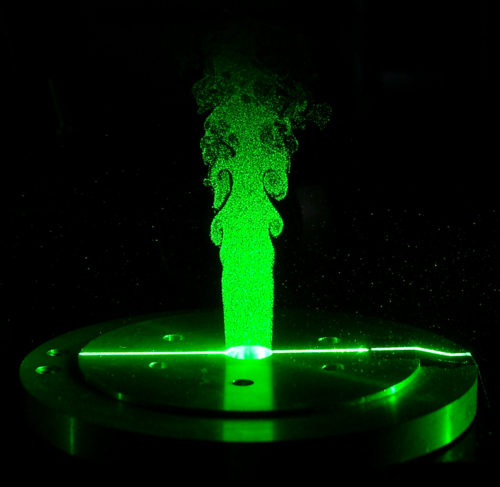This is a quick overview on our major research topics.
With recurrence CFD we radically change our approach towards CFD simulations - from deterministic equations towards a stochastic evaluation of recurring memory shift patterns.
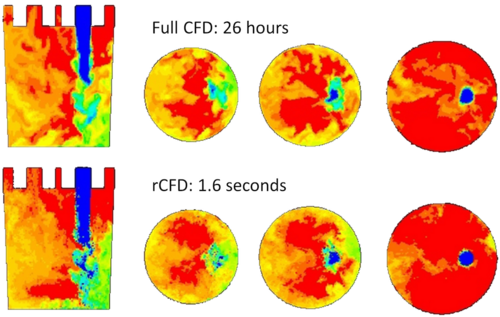
We currently develop a particle (cluster induced) turbulence model, which is based on the concept of solid phase turbulence. This method yields considerably more general coarse-grained constitutive relations (such as for gas-solid drag and Reynolds stresses), applicable to different particle types and flow regimes such as bubbling beds, turbulent beds, riser flows and gas-solid flows near walls. Finally, we also investigate the physical origin of clustering as well as the turbulent behaviour of particle clusters.
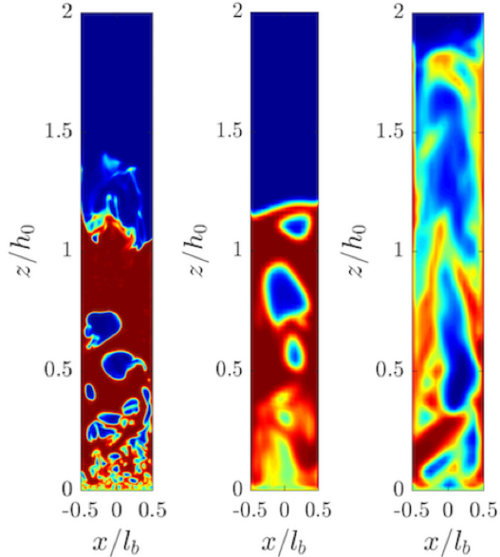
Despite constantly growing computing power, discrete element method (DEM) simulations of granular systems can hardly reach the time and length scales required to describe industrial applications. The coarse-grain (CG) model of the DEM alleviates the hardware requirements representing a number of particles by a coarser (pseudo) particle, thus effectively reducing the amount of particles involved in the calculations. However, due to the violation of geometric similarity introduced by the upscaling of particles, this approach fails for effects that intrinsically depend on particle size.
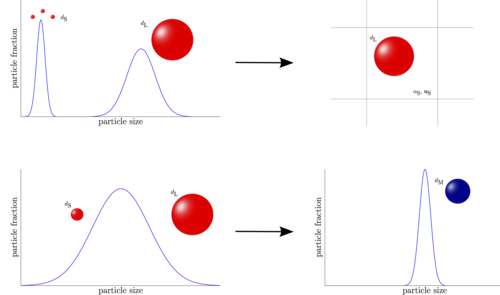
Interfacial flows are omnipresent in various industrial and environmental processes including liquid atomization, oil extraction, continuous casting, etc. Numerical modelling of such flows is essential especially when turbulence steps, and large eddy simulation (LES) is a proper tool. However, development of subgrid scale models is still a challenging shortcoming in this context. We are currently focused on development of structural and functional subgrid models for two-phase LES to take the steps toward mutliscale modelling of turbulent interfacial flows.

Numerical simulation is crucial in many microfluidics applications as experiment is difficult to conduct due to the very small dimensions. The transport of liquid through micro-channels is the basis of building many microfluidic devices for biomedical purposes. Currently we work on efficient of modelling the capillary-driven flow in micro-channels as well as mathematical modelling of complex biological flows such as the blood flow with suspension of deformable red blood cells.
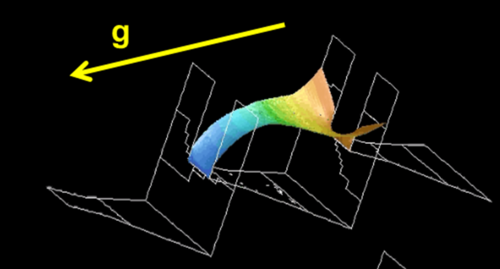
From the beginning of our research group we took the challenge to provide high quality validation data for our model developments by in-house experiments. Thus, we have developed a strong focus on signal and image processing as multiphase fluid mechanics is quite off the track of classic experimental fluid mechanics.
